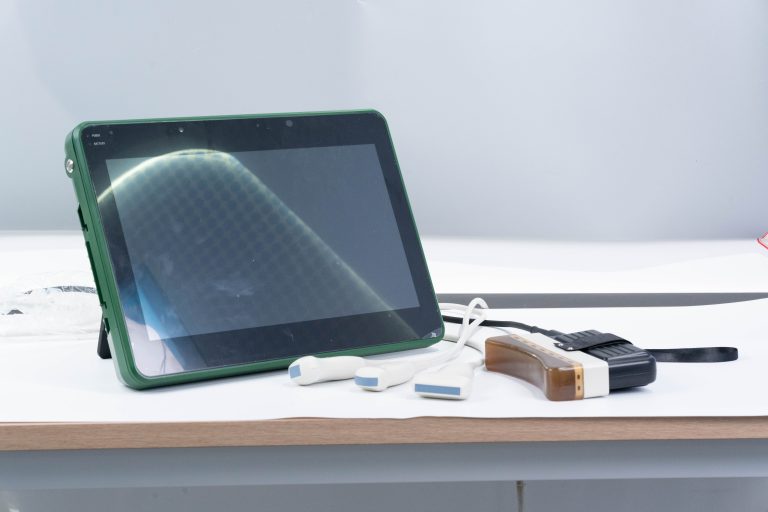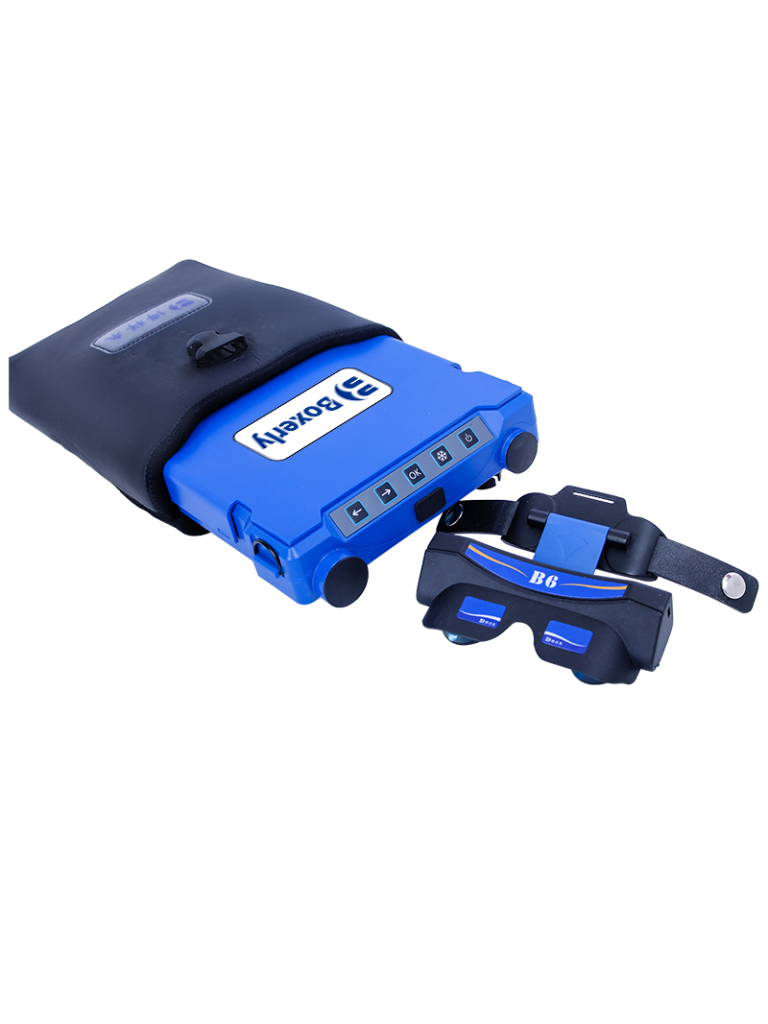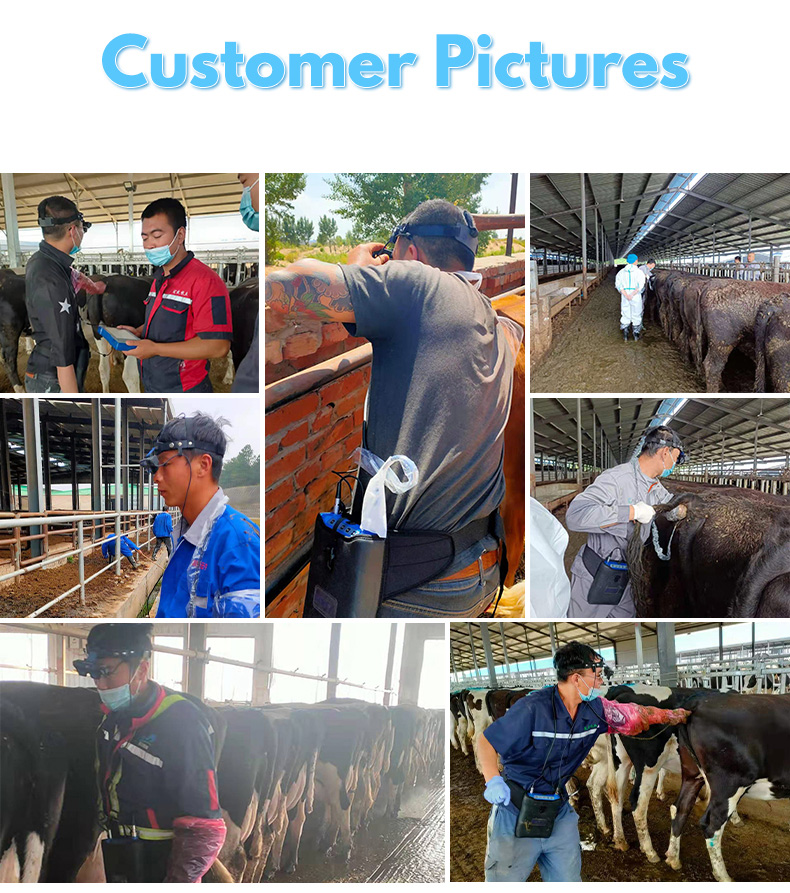Portable Ultrasound Systems for Detecting Early Pregnancy Loss in Dairy Cows on the Farm
When running a dairy farm, few things are more frustrating than finding out a cow believed to be pregnant has silently lost her calf. Early embryonic loss doesn’t just cost time — it impacts milk production schedules, herd planning, and overall farm economics. Fortunately, with modern portable ultrasound systems, farmers now have the ability to detect early pregnancy loss with precision, speed, and minimal stress to the animal.

More and more dairy producers, especially in the U.S., Canada, and Europe, are adopting portable ultrasound technology as a daily tool in herd management. Why? Because spotting early signs of trouble during the first few weeks of gestation gives you a chance to act quickly — whether that means adjusting feeding, treating infections, or simply knowing when to breed the cow again.
Why Early Pregnancy Loss Is Such a Big Deal
A cow’s pregnancy may look secure from the outside, but around 20% to 40% of pregnancies are lost within the first 45 days post-insemination, according to studies published in journals like Theriogenology. The reasons vary: poor nutrition, infection, heat stress, uterine health, or even genetic incompatibility.
What makes it challenging is that these losses often happen without external symptoms. The cow doesn’t go into heat again right away, and from a management perspective, she looks like she’s still pregnant — until the pregnancy check weeks later tells a different story. That’s weeks of lost breeding opportunity and milk production down the drain.
The Role of Portable Ultrasound in Modern Dairy Farming
Portable ultrasound systems, especially those designed for large animals, have changed the game. These aren’t the big, clunky hospital-style machines. Devices like the B-mode veterinary ultrasound scanners — compact, battery-powered, rugged, and often water-resistant — are made for barn and field use.
They allow veterinarians or trained farm staff to:
-
Confirm pregnancies as early as 28–30 days
-
Detect embryonic heartbeat to confirm viability
-
Spot signs of fetal resorption or uterine abnormalities
-
Differentiate between a healthy pregnancy and an early loss
With real-time imaging, the user can visualize the uterus and identify issues like an empty gestational sac, abnormal fluid distribution, or lack of heartbeat in the embryo — all signs that point to a failed pregnancy.
What You See During a Normal vs. Abnormal Early Pregnancy
During a healthy pregnancy scan between days 30 and 50:
-
A clear gestational sac is visible in the uterine horn
-
The embryo appears as a small echogenic structure
-
The heartbeat flicker is usually detectable around day 28–30
In cases of early pregnancy loss:
-
The gestational sac might be collapsed or irregular
-
No embryonic heartbeat is detected
-
Fluid echotexture changes — becoming cloudy or containing debris
-
Sometimes, signs of uterine inflammation are visible
Catching this in real-time allows for faster management adjustments. The earlier a non-pregnant cow is identified, the sooner she can be bred again.
Why Portability Matters on a Dairy Farm
Many farms are choosing portable over stationary systems for a simple reason: cows don’t always come to the equipment — you need to bring the equipment to them.
Portable ultrasound machines like the BXL-V50 offer features that are particularly beneficial in a working farm environment:
-
Battery life lasting over 7 hours
-
Easy to carry into the barn or pasture
-
Durable enough to withstand dust, water, and accidental drops
-
Capable of transrectal imaging, the gold standard for bovine reproductive exams
These features reduce the stress of scanning and make routine herd checks far more efficient, especially for mid-sized and large farms.
Who Performs the Scans?
While a licensed veterinarian traditionally handled reproductive ultrasound, more dairy farms in places like New Zealand, the Netherlands, and Wisconsin are training in-house staff to conduct basic pregnancy checks under veterinary guidance. The scans are quick (just a few minutes per cow) and can be integrated into weekly or bi-weekly herd management routines.
Making Better Breeding Decisions with Ultrasound
Let’s say your herd’s average conception rate is 40%. Without ultrasound, you’d have to wait 45–60 days to know whether breeding was successful. But with a portable ultrasound unit, you can:
-
Identify pregnant cows earlier and move them to the appropriate feeding group
-
Detect non-pregnant cows early and schedule timely rebreeding
-
Spot cows with reproductive disorders and send them for treatment
This shortens the calving interval, improves overall fertility, and makes your breeding program more precise.
Field Examples from U.S. and European Farms
On a 300-head dairy farm in northern California, a herd manager named Lisa uses her portable ultrasound unit every two weeks to check newly bred cows. Since switching from manual palpation to ultrasound, she reports a 25% drop in the number of days cows are open (not pregnant).
In Ireland, dairy cooperatives are encouraging members to adopt ultrasound scanning between days 30 and 40 post-AI (artificial insemination). The results have helped reduce culling rates and improve milk yield planning — all by catching issues early.
Challenges and Learning Curve
Of course, using ultrasound effectively takes practice. It’s not just about seeing a black-and-white screen — interpreting it accurately matters. That’s why many farmers initially work alongside a vet until they’re confident in reading the images. Plus, keeping the probe clean, the cow calm, and the timing right (after urination, relaxed rectum) improves image quality.
Also, it’s important to note that very early scans (under 28 days) may produce false positives due to fluid without an embryo. That’s why most guidelines suggest scanning between 30 and 45 days post-AI for best results.
Financial Impact of Early Pregnancy Detection
Let’s run a quick example. If you scan 100 cows and catch 30 that aren’t pregnant earlier than you would through heat monitoring or rectal palpation, that’s potentially 30 extra breedings in a shorter time frame. That translates into:
-
Lower days open
-
Higher annual milk output per cow
-
Fewer missed lactations
-
Lower overall culling rates
The cost of a good portable ultrasound system pays off fast — often within a single breeding cycle, especially for farms with over 150 head.
Where the Technology Is Going Next
Some of the most exciting developments include AI-integrated ultrasound systems that automatically flag abnormalities and upload data to herd management software. While still emerging, this trend is growing rapidly in places like Germany and Canada.
We’re also seeing wireless probes connected to tablets and smartphones, improving portability even more. Imagine walking through the herd with just your phone and probe, capturing images and saving them directly to the cloud — this is no longer science fiction.
Final Thoughts
Portable ultrasound systems have made early pregnancy loss visible and actionable. No more waiting, guessing, or hoping a cow is still pregnant. With accurate, real-time imaging, farmers are saving time, improving breeding programs, and enhancing animal welfare.
If you’re managing a dairy herd and haven’t yet integrated portable ultrasound into your routine, now might be the time to consider it. Whether you work with your vet or train your team, the clarity it brings can make all the difference — one scan at a time.





